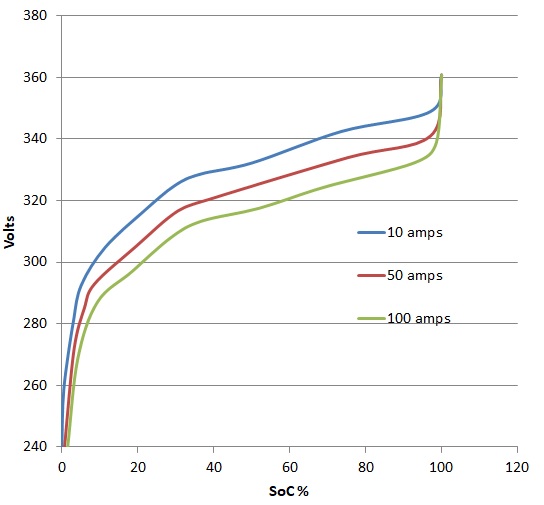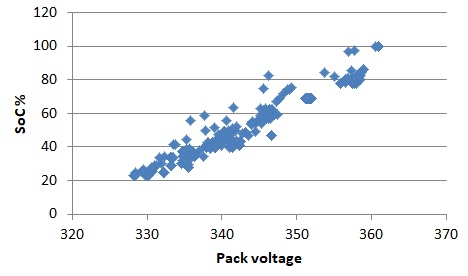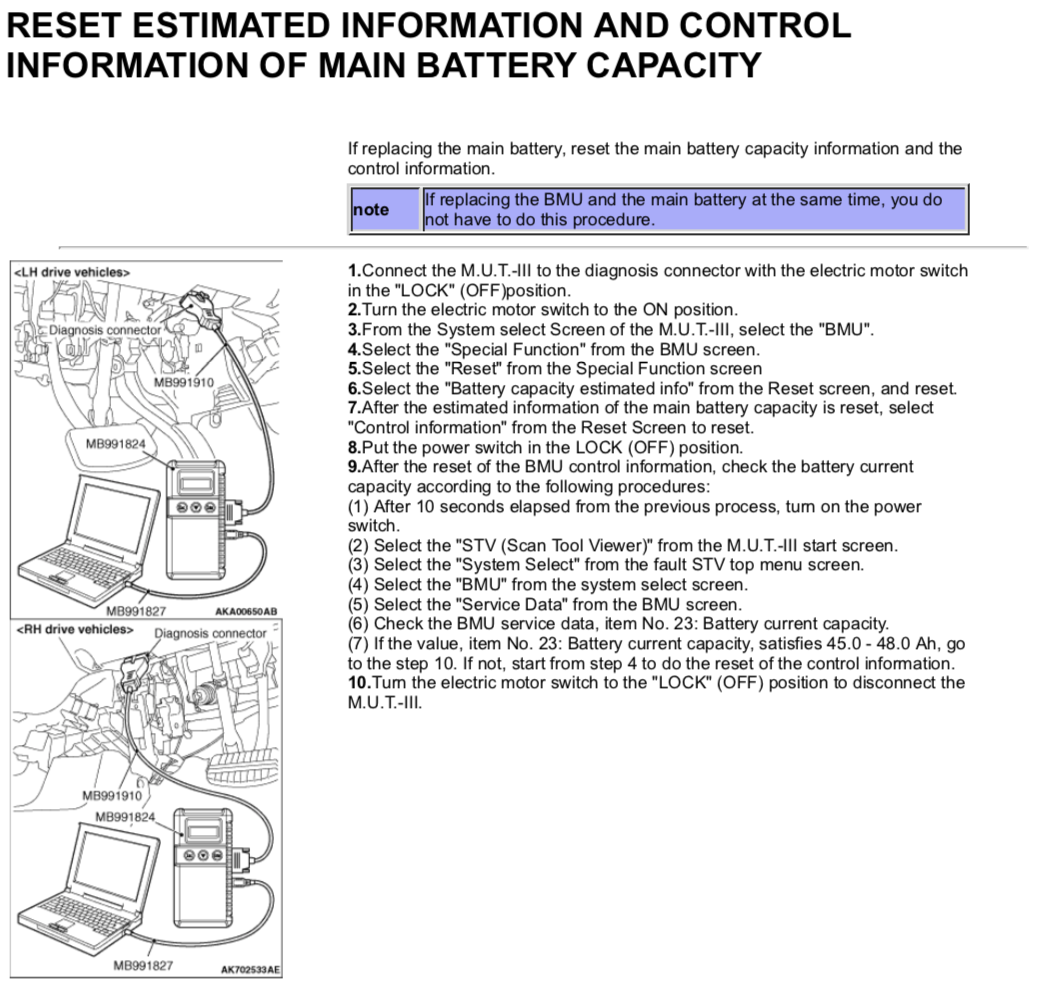i was searching for a graph, chart or table of this data--seems like someone posted this before but i can't seem to find it using the search. Just a simple table of battery pack voltage at 10% SOC increments would be helpful.
i know that 100% SOC is about 360 Volts but didn't have a feel for the rest to know if there is a problem here in piev's #3 car. [Edit: this is a problem] Here's a Canion shot, Mileage and RR are in km.
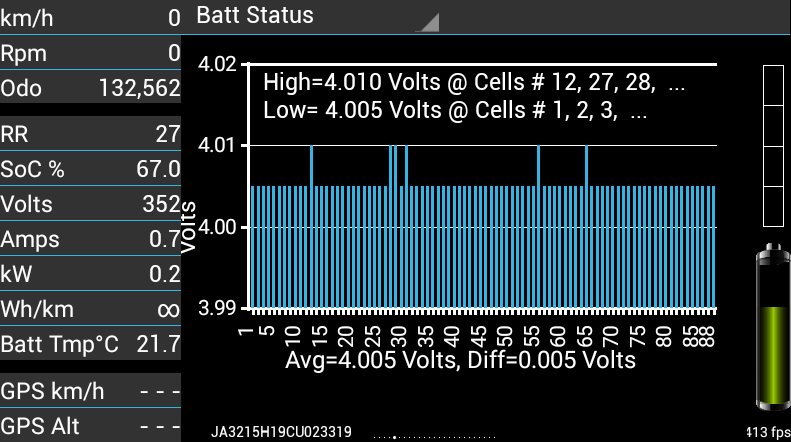
and from the MUT clone
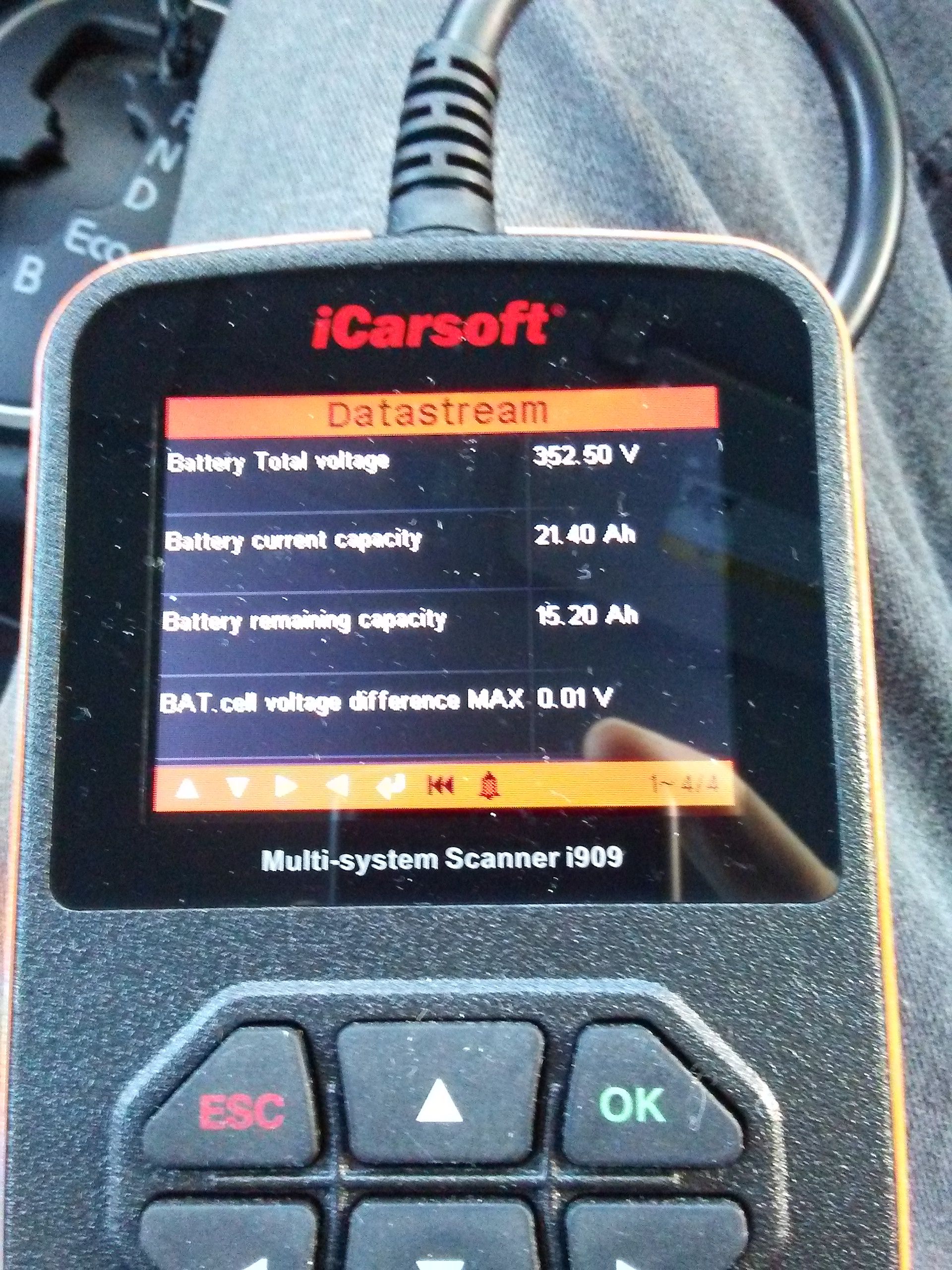
Seems like capacity and SOC should be higher for this pack voltage? And this is a new replacement pack that is supposedly only about 17 months old.
SOLVED: This is a new pack but it wasn't acting as such. i sent Paul the FSM instructions for replacing a pack, which includes a step to "reset" the capacity. It appears that this step had not been completed properly and was causing the low capacity reading and the lack of ability to use the entire voltage range of the pack. He had to take it to the dealer service dept twice, and show them a printout of the procedure, to finally get the "reset" completed. Now the capacity reading is 45.6 Ahr and he is getting the expected range of a full pack! Details in post#13.
i know that 100% SOC is about 360 Volts but didn't have a feel for the rest to know if there is a problem here in piev's #3 car. [Edit: this is a problem] Here's a Canion shot, Mileage and RR are in km.

and from the MUT clone

Seems like capacity and SOC should be higher for this pack voltage? And this is a new replacement pack that is supposedly only about 17 months old.
SOLVED: This is a new pack but it wasn't acting as such. i sent Paul the FSM instructions for replacing a pack, which includes a step to "reset" the capacity. It appears that this step had not been completed properly and was causing the low capacity reading and the lack of ability to use the entire voltage range of the pack. He had to take it to the dealer service dept twice, and show them a printout of the procedure, to finally get the "reset" completed. Now the capacity reading is 45.6 Ahr and he is getting the expected range of a full pack! Details in post#13.




